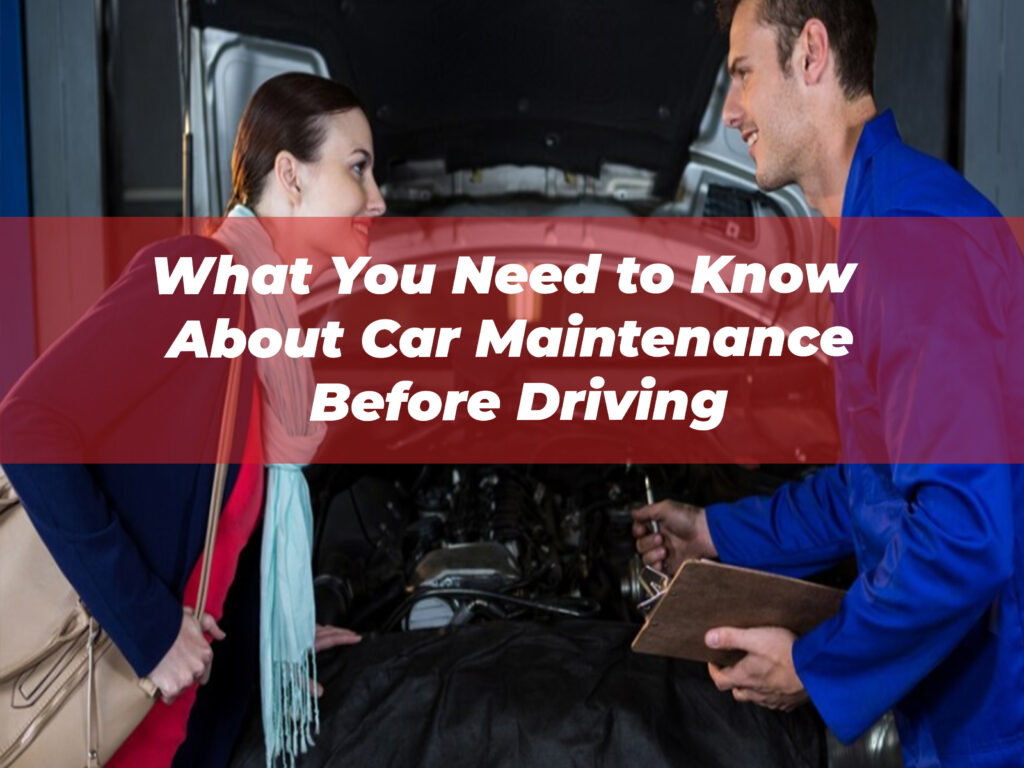Car Maintenance Before Driving isn’t just about keeping it looking shiny on the outside; it’s about ensuring your safety, saving money in the long run, and improving the overall reliability of your vehicle. Whether you’re a seasoned driver or someone who’s just earned a license, understanding basic car maintenance is essential for protecting your investment and ensuring a smooth driving experience.
This guide will break down the essentials you need to know about car maintenance before hitting the road. From regular checks to preventive measures, we’ve got you covered with practical tips that are easy to follow.
Why Car Maintenance Matters
Many people often overlook the importance of Car Maintenance Before Driving their vehicles until something goes wrong. But proper care of your car can help you avoid costly repairs, reduce the chances of a breakdown, and extend the life of your vehicle.
Here’s why car maintenance is non-negotiable:
- Safety First: Faulty brakes, worn-out tires, or engine issues could lead to serious accidents.
- Cost Savings: Catching minor issues early prevents them from turning into larger, more expensive problems.
- Fuel Efficiency: A well-maintained car uses gas more efficiently, saving you money at the pump.
- Longevity: Regular upkeep helps your car last longer and retains its resale value.
Now, let’s get into what you need to know and do to keep your car running like a dream.
Essential Car Maintenance Tips for Every Driver
1. Check and Change the Engine Oil
Your engine oil is one of the most critical fluids in your Car Maintenance Before Driving. It lubricates the engine’s moving parts, reduces friction, and prevents overheating. Driving with dirty or low oil can lead to severe engine damage.

How to Check Your Oil
- Park on a level surface and turn off the engine.
- Open the hood and locate the dipstick.
- Pull the dipstick out, wipe it clean, and dip it back into the tube fully.
- Remove it again and check the oil level. It should fall between the two marks (low and full).
If the oil looks dark or gritty, it’s time for an oil Car Maintenance Before Driving. Most manufacturers recommend changing the oil every 5,000 to 8,000 kilometers, but always refer to your car owner’s manual for guidance.
2. Monitor Tire Health
Your car’s tires are the only point of contact with the road, so they play a vital role in safety, fuel efficiency, and driving performance.
Check Tire Pressure Regularly
- Low tire pressure can reduce gas mileage and make your car harder to handle. On the flip side, overinflated tires increase the risk of a blowout.
- Check your tire pressure at least once a month using a tire pressure gauge. Many gas stations also offer free air pumps.
Look for Tread Wear
Tire tread provides traction. Worn-out tread can make Car Maintenance Before Driving dangerous, especially in rainy or icy conditions. A simple trick is the “coin test”:
- Insert a coin into the tread with the head downward. If you can see the top of the head, it’s time to replace the tires.
Don’t forget to rotate your tires every 8,000–10,000 kilometers for even wear.
3. Keep an Eye on the Battery
A dead battery can leave you stranded anywhere, so it’s crucial to monitor its health. Batteries typically last three to five years, but factors like climate and driving habits can impact their lifespan.
Maintenance Tips for Your Car Battery
- Look for signs of corrosion on the terminals and clean them using a battery cleaning brush.
- Ensure the battery cables are tight and secure.
- Test your battery’s voltage regularly, especially before long trips.
If you experience slow engine cranks, dim headlights, or need frequent jump-starts, it might be time for a replacement.
4. Inspect the Brakes
Brakes are undoubtedly one of the most critical safety features of your Car Maintenance Before Driving. Avoid waiting for squealing or grinding noises, as by then the damage may already be significant.
Signs Your Brakes Need Attention
- Vibrations when braking.
- The car pulling to one side when you brake.
- A squishy or unresponsive brake pedal.
For regular maintenance, have your brake pads, rotors, and fluid checked by a professional at least once a year.
5. Check the Lights
Functional headlights, taillights, signal Car Maintenance Before Driving, and brake lights are crucial for ensuring your visibility and communicating with other drivers on the road.
How to Check Your Lights
- Test all exterior and interior lights once a month.
- Replace burnt bulbs immediately to avoid potential fines or reduced safety.
Foggy or yellowed headlights can be restored with kits available at auto parts stores if cleaning the lens doesn’t improve clarity.
6. Keep an Eye on Fluid Levels
Your car relies on several important fluids beyond just engine oil. These include transmission fluid, coolant, power steering fluid, and brake fluid. Each fluid plays a unique role in keeping your car running smoothly.
Maintenance Tips
- Check these fluids regularly (monthly or as suggested in your car’s manual).
- Top them off if they are low, and watch for signs of leaks under the Car Maintenance Before Driving.
- Change fluids according to your manufacturer’s recommendations.
7. Replace Air Filters
Your car uses two crucial air filters: one for the engine and one for the cabin.
- Engine Air Filter: A clean filter ensures proper air intake, which is vital for engine performance and fuel economy. Replace it every 15,000 to 30,000 kilometers.
- Cabin Air Filter: This improves air quality inside your vehicle and should be replaced annually or as needed.
8. Wiper Blades and Windshield Washer Fluid
Visibility is critical when driving, especially in bad weather. Your wiper blades and washer fluid must be in good condition to clear your view effectively.
Maintenance Tips
- Replace your wiper blades every 6–12 months or sooner if they leave streaks on the windshield.
- Check your windshield washer fluid regularly and top it off with a good-quality Car Maintenance Before Driving. Don’t rely on plain water, as it can freeze in colder climates.
Preventive Maintenance for a Hassle-Free Drive
While routine checks are essential, preventive measures will help you avoid unexpected breakdowns and costly repairs.
1. Schedule Regular Inspections
Take your car for professional inspections at least twice a year. Mechanics can spot issues that aren’t always noticeable to untrained eyes, such as worn belts, damaged hoses, or hidden leaks.
2. Follow the Manufacturer’s Maintenance Schedule
Every car comes with an owner’s manual that provides maintenance intervals for essential components. Don’t ignore these guidelines, as they help prevent issues before they arise.
3. Pay Attention to Warning Lights
Modern cars have warning lights on the dashboard that indicate potential problems. Common ones include the Check Engine light, oil pressure light, and battery indicator. Never ignore these signals, as they may require immediate Car Maintenance Before Driving.
Tips for New Drivers
If you’re new to car ownership, the idea of maintenance might feel overwhelming. Here’s how to ease into the process and make it less intimidating.
1. Learn the Basics
Know how to check your oil, tire pressure, and coolant Car Maintenance Before Driving. These skills will save you a lot of trouble down the line.
2. Keep a Toolkit in the Car
Emergencies can happen, so keep a basic toolkit with items like a tire pressure gauge, jumper cables, flashlight, and wrenches.
3. Find a Reliable Mechanic
Establishing a relationship with a trustable auto repair shop lets you get honest advice and professional care for your Car Maintenance Before Driving.
Final Thoughts
A well-maintained Car Maintenance Before Driving doesn’t just perform better; it also keeps you and others on the road safe. Car maintenance might seem like a chore at first, but once you establish a routine, it becomes second nature. With the tips outlined here, you can take control of your vehicle’s health, reduce stress while driving, and enjoy peace of mind knowing you’re road-ready.
The time you invest in maintaining your car will pay off by preventing breakdowns, improving its lifespan, and Car Maintenance Before Driving your driving experience. Whether you’re a new driver or an experienced one, these simple steps will help you keep your car in top condition.










